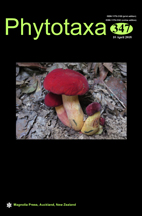Abstract
Three new species of Senecio (Compositae: Senecioneae) from Central Peru are described and illustrated. Morphological characters are used in order to distinguish them from the closest species. Senecio crassiandinus Montesinos & Pino has succulent leaves with cuticle composed of translucid white glands, bright yellow disc florets with blotches of pale reddish-brown in the corolla throat and linear-oblong achenes covered with trichomes, which distinguish it from the other South American species of the genus. Senecio inghamii Montesinos has oblanceolate-ovate to rhombic-quadrate leaves, short-sized, with serrate-quadrate dentation, upper surface lustrous and glossy, lower surface densely covered with whitish lanuginose pubescence, capitules bear trilobulated ray florets, achenes copiously covered by fimbriate hairs which differentiates it from its closest relative, S. pensilis Greenm. Senecio roseoandinus Montesinos & R. Zárate is a unique pubescent species characterized for being a perennial rhizomatous herb, with lanuginose and arachnoid trichomes, leaves elliptic-lanceolate, thick, densely arachnoid to glabrous (lustrous, glossy, dark green), margin entire to crenate, synflorescence in racemes, capitules discoid, corolla pale yellow but turning fuchsia-pink at maturity, achenes oblong, striate, and glabrous. All three new species are distributed in the Alto Marañon river mountain slopes, at altitudes ranging from 2000 up to 4200 m a.s.l. The species are, so far, only known from their type localities in the Huánuco region.

